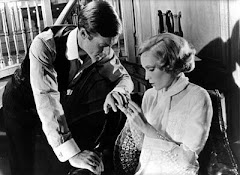The green light is a symbol for hope and promise - a hope that the "ash heap" of the present will
 change to that of a great future, where dreams come true and the American Dream is realized. (https://www.msu.edu/~millettf/gatsby.html) The person that this green light is affecting is Gatsby, the hope that is instilled in him is for Daisy. His hope lies in the fact that he hopes that him and Daisy can reunite in love, not just friendship. Nick remembers the night he saw Gatsby stretching his arms out to the water and realizes that the green light he saw was the light at the end of Daisy’s dock. Thus proving that this hope is for Daisy.
change to that of a great future, where dreams come true and the American Dream is realized. (https://www.msu.edu/~millettf/gatsby.html) The person that this green light is affecting is Gatsby, the hope that is instilled in him is for Daisy. His hope lies in the fact that he hopes that him and Daisy can reunite in love, not just friendship. Nick remembers the night he saw Gatsby stretching his arms out to the water and realizes that the green light he saw was the light at the end of Daisy’s dock. Thus proving that this hope is for Daisy."If it wasn't for the mist we could see your home across the bay... You always have a green light that burns all night at the end of your dock." The green light on Daisy’s house that Gatsby gazes wistfully
 at from his own house across the water represents the "unattainable dream." But the green light also represents the hazy future, the future that is forever elusive, as Nick claims in the last page of the novel, "Gatsby believed in the green light, the orgastic future that year by year recedes before us. It eluded us then, but that’s no matter – to-morrow we will run farther, stretch out our arms farther…." The interesting question is, if the green light is the future, how is it so tied up with Daisy and the dreams of the past?(http://www.shmoop.com/great-gatsby/symbolism-imagery.html)
at from his own house across the water represents the "unattainable dream." But the green light also represents the hazy future, the future that is forever elusive, as Nick claims in the last page of the novel, "Gatsby believed in the green light, the orgastic future that year by year recedes before us. It eluded us then, but that’s no matter – to-morrow we will run farther, stretch out our arms farther…." The interesting question is, if the green light is the future, how is it so tied up with Daisy and the dreams of the past?(http://www.shmoop.com/great-gatsby/symbolism-imagery.html)The green light is probably one of the most important symbols in The Great Gatsby. Green is the color of hope and it first appears when Gatsby stares across the bay towards a green light at the end of a dock (21,8ff.). Later the reader finds out that this light stands on Daisy Buchanan’s dock. In the context of the novel this green light represents Gatsby’s hope to meet Daisy again and a chance to win her back. “Gatsby believed in the green light”(128, 26). (http://www.ovtg.de/3_arbeit/englisch/gatsby/Symbols.html)
































